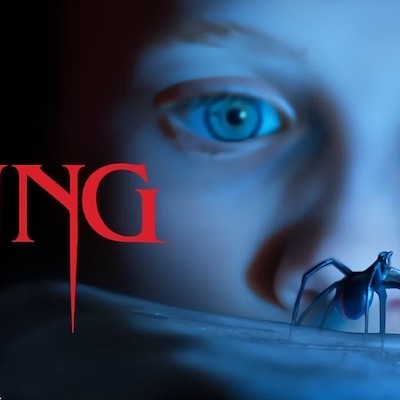The man's face looks aged and weathered.
Accordionist is the last vocation you would pick for him, as his wrinkled hands relay the same signs of aging; still, he holds the instrument expertly, fingers lingering over keys like a lover's graze upon soft flesh. However nimble and confident his fingers may be, it is his face that catches the eye. He wears an expression of fear, and it's not hard to see why: Behind him, a tiger's body is caught in mid-pounce. His left paw is raised, his claws, unsheathed.
The man is Orpheus, ancient Greek musician famed to be able to hypnotize any living creature, human or animal, with the sounds of music. This explains his fingers over the accordion; apparently he is trying to fend off an attack -- and by the tiger's glazed expression, it's working. Thank goodness.
The success of "Orpheus," a painting by Kermit Oliver, is its realism, created by expert application of oil acrylic to canvas. The oil acrylic is applied in short downward strokes, creating vertical lines that imply movement. Oil Acrylic is also applied in layers, one on top of the other, making the picture look wet. Because liquids are known for their fluidity, this technique also gives the painting kinetic movement. This is what makes the man look so tight, the tiger so taut, as if he (or she) may, in fact, bypass "Orpheus" altogether and jump out of the painting toward you.
"Kermit Oliver: Tracing Our Pilgrimage" is an exhibition of 17 paintings -- including "Orpheus" -- taking up Art League Houston's front and hallway galleries. The 17 works on display span 30 of his 40 years as a painter. Each of the paintings features either a person or an animal, sometimes both. Though realism is the overriding style here, many, if not all, of the paintings, also convey a touch of surrealism. There are pieces that display hanging animals on top of random pieces of paper ("Buckeye Atop a Mexican Wheel"), boys in red paper hats ("Portrait of Khristopher with Red Hat") and paintings that feature female ghosts, seagulls and monkeys resting on a sandy beach. The latter, "Dido and Aeneas" (1997), is confusingly captivating, in the sense that you are aesthetically pleased with what you are looking at, even if you don't quite understand what it is -- at least, not without a little bit of research.
Based on the opera of the same name by composer Henry Purcell, Dido and Aeneas tells the tale of Dido, Queen of Carthage, and her unrequited love for Trojan prince, Aeneas. In the end, Dido literally dies of a broken heart, so it is apropos that Oliver depicts his "Dido" as a ghost sitting on an abandoned beach. The beach scene is actually one-half of the painting. "Dido and Aeneas" is split vertically into two halves, with the left side portraying a black and bleak funeral procession. Not one to divert from the African-American lineage present in most of his paintings, Oliver paints the originally Carthaginian Dido as a Black woman with long dreadlocks accessorized with golden beads. Her face has a ghostly pallor. Oliver's talent with oils is evident here, also; where in "Orpheus" he made the oils wet, here he takes a wet substance and makes it look dry, like powder.
Though many of his pieces "trace his pilgrimage" back to places like ancient Greece and Troy -- "My work is a reverberation of memories," Oliver told Jason Sheeler in a Texas Monthly article -- Oliver is a native Texan and Texas Southern University graduate who, until a month ago, quietly sorted mail in a Waco post office. However, his Texas roots were not enough to inspire the famously reclusive painter to come to his own opening Friday evening. (Ironically this elusiveness doesn't stop Oliver from designing a scarf every year for one of the world's most coveted couture brands, Hermes. Fancy, huh?) Despite this, Art League Houston not only exhibits Oliver, but honors him with their 2013 Lifetime Achievement Award -- hermit factor notwithstanding. "Kermit Oliver: Tracing Our Pilgrimage" will be on view through November 15. Visit artleaguehouston.org for more information.





